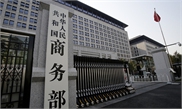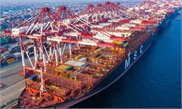China’s FDI reverses decline in April with 11.8% growth: MOFCOM
FDI reverses decline in April with 11.8% growth: MOFCOM

Consumers browse through fridges of cheese at a Walmart store in Chaoyang district, Beijing. Photo: Li Xuanmin/GT
Foreign direct investment (FDI) in China rose 11.8 percent year-on-year to 70.36 billion yuan ($9.9 billion) in April, after dropping in the previous two months due to the COVID-19 outbreak, official data showed on Thursday.
The gain in April partly reflected a low year-earlier base, but it also represented a vote of confidence by foreign companies in China, which has announced policies to stabilize and protect foreign investment since the beginning of the year, Gao Feng, spokesperson of the Ministry of Commerce (MOFCOM), told a meeting in Beijing.
In January, FDI rose 4 percent on a yearly basis, maintaining stable momentum from a year earlier. But the figure tumbled 25.6 percent in February, and then fell 14.1 percent in March.
From January to April, FDI slid 6.1 percent to 286.55 billion yuan.
Since the pandemic has dealt a heavy blow to world trade and industry chains, global investment is going through a serious downturn, Gao said, noting that China faces a severe and complicated situation in absorbing global investment and stabilizing foreign trade.
China is still attractive to foreign capital and remains a vital investment destination for global companies thanks to resilience of its economy, improving business environment, expanding opening-up and complete industry chains, KPMG said in a recent report.
Foreign companies continue to expand their investment in China despite the epidemic. For instance, Walmart said in March its membership warehouse chain Sam's Club is set to open a new flagship store in Shanghai in 2021. More examples can be found, such as Seattle-based Starbucks, which in March announced a plan to build a coffee innovation park in East China's Jiangsu Province.
Apart from FDI, China's exports in April exceeded market expectations, Gao noted. China made progress in containing the virus, which supported domestic companies' efforts to resume work and production, and guarantee an expansion of exports, Gao said.
One factor driving China's exports in April was demand from Japan and South Korea, which revived relatively quickly, he said.
China's exports in April rose 8.2 percent year-on-year to 1.41 trillion yuan while imports were down 10.2 percent to 1.09 trillion yuan, according to customs data.



